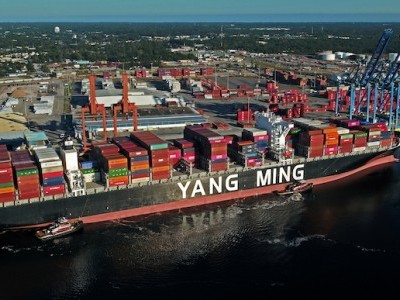Importance of inland waterways stands out with Mississippi River low-water emergency
Mississippi River barge traffic paralyzed by low water emergency.
The importance of inland waterways has never been clearer than now with the Mississippi River low-water emergency. The United States has over 12,000 miles of navigable inland waterways, that annually carry nearly 500 million tons of freight. But the importance of these freight marine highway conduits is often overlooked…until a disruption occurs. And that disruption is the low-water emergency the Mississippi River system is now experiencing.
American Commercial Barge Line (ACBL) reported on October 6th that Mississippi River vessels are experiencing: “Historic low water conditions” and that “River levels continue to fall on the Mississippi River with severe impacts to navigation not seen since 1988.” The Jeffersonville, Indiana-based-ACBL, one of the largest and most diversified marine transportation companies in the U.S. also said: “Industry is expecting catastrophic impacts to boat capacity, which will in turn drastically decrease ton-mile productivity for the inland rivers.” In respect the mitigating steps taken by the company, ACBL also reported that it is working to crew all available boats and mobilize equipment to combat these conditions. The industry has reduced the loading drafts to 9’6” as of September 27th. This change reflects a 20-27% reduction to tons per barge versus normal conditions. The company is planning to move barges “in our network loaded prior to this change per the below guidance.” As a result: Barges up to 10’ 0’ will continue to move from Cairo South. Barges between 10’ 0’ and 10 6’ will continue to move from Rosedale South. No barges over 10’ 6’ will be moved until further notice. The industry has agreed to a 25-barge max tow size reflecting a 17-38% reduction in tow size. Groundings have been driving intermittent closures of 12-36 hours daily over the past three weeks. Docks and harbors may see further draft restrictions locally, some reportedly at 7 max. U.S. Army Corps of Engineers “is engaging additional buoy boats to improve navigational aids as well as two dredges” and “Dredging activities expected to drive full closure periods to transit during this event. Finally, the company said, “Expect these issues to continue through October based on forecasted precipitation.”
Similar Stories

Hapag-Lloyd WDS/WID surcharge to the U.S. East Coast and Gulf ports
View Article
MSC schedule update – Trade Asia to USA West Coast
View Article
Stena RoRo takes delivery of the battery hybrid vessel Guillaume de Normandie
View Article
Indian Register of Shipping reflects on 2024 and sets ambitious goals for 2025
View Article
Yang Ming announces 2025 Trans-Atlantic services
View Article
Exclusive interview with AWO’s Jennifer Carpenter
View ArticleGet the most up-to-date trending news!
SubscribeIndustry updates and weekly newsletter direct to your inbox!





